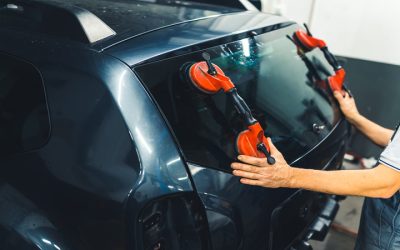It always seems to happen when you least expect it -; as if out of nowhere a stone slams into your windshield with a resounding “thud”. Or because you are a first responder you receive an emergency page. You leap into your Chevy pickup and take off down the road. Not even 1/2-mile down the road your hood pops open and slams into your windshield cracking it horizontally, edge to edge. Whatever the cause the damage is done and it must be repaired. Driving with a cracked windshield is inconvenient and dangerous, especially when the damage is in the driver’s direct line of sight.
The key to successful repair is to immediately get your vehicle in for windshield repair in Saint Paul, MN. Prompt action is the secret to preventing chips and cracks from worsening. Many factors contribute to making cracks and chips worse including road vibrations while driving or hitting potholes. Temperature extremes such as freezing weather will cause cracks to lengthen cracks horizontally and hot summer weather will lengthen cracks vertically.
Having an experienced technician at website is the best choice for restoring a vehicle’s windshield integrity and strength. The windshield permits the passenger-side airbag to deploy properly by deflecting the airbag off the windshield before hitting the passenger. With 2,000 pounds of force behind the airbag, a windshield must be able to withstand the impact. A vehicle’s windshield also provides over 25% of its structural integrity and protects the passengers in an accident, especially a rollover by prohibiting the roof from collapsing.
The process for windshield repair in Saint Paul, MN is quick and simple. The technician will first inspect the windshield to determine if it’s repairable. Chips less than the size of a quarter and cracks less than three inches long are repairable. Chips and cracks in the driver’s direct line of sight are not repaired because even the best repair work may leave discoloration or distortions that reduce visibility. In these instances, the windshield would be replaced. If the damage can be repaired, the damaged area will be cleaned and dried and then injected with an acrylic resin that bonds to the area. The resin is smoothed and cured with an ultraviolet light. When the resin is set the area will be polished eliminating all tell-tale signs of damage so you can get back on the road answering those first responder calls.

